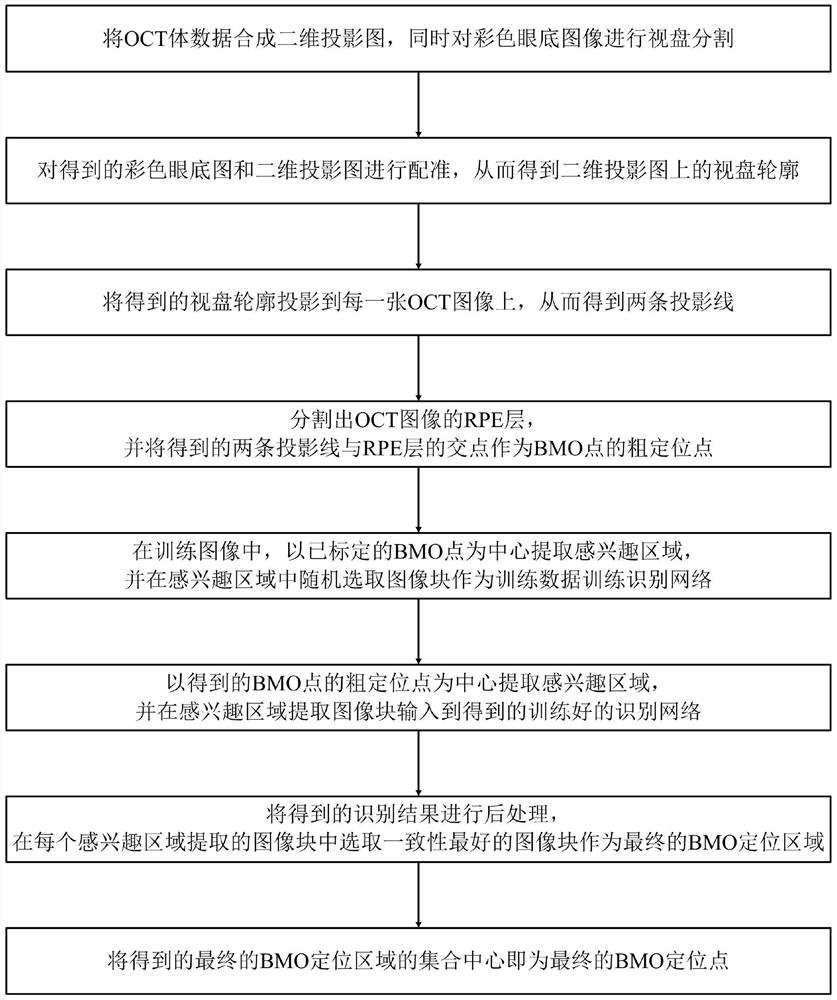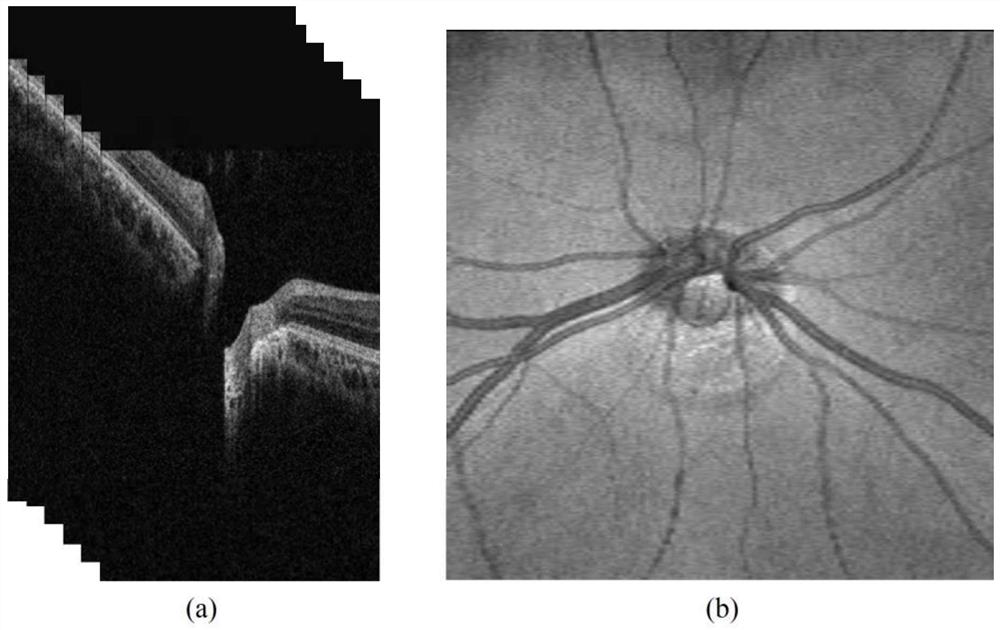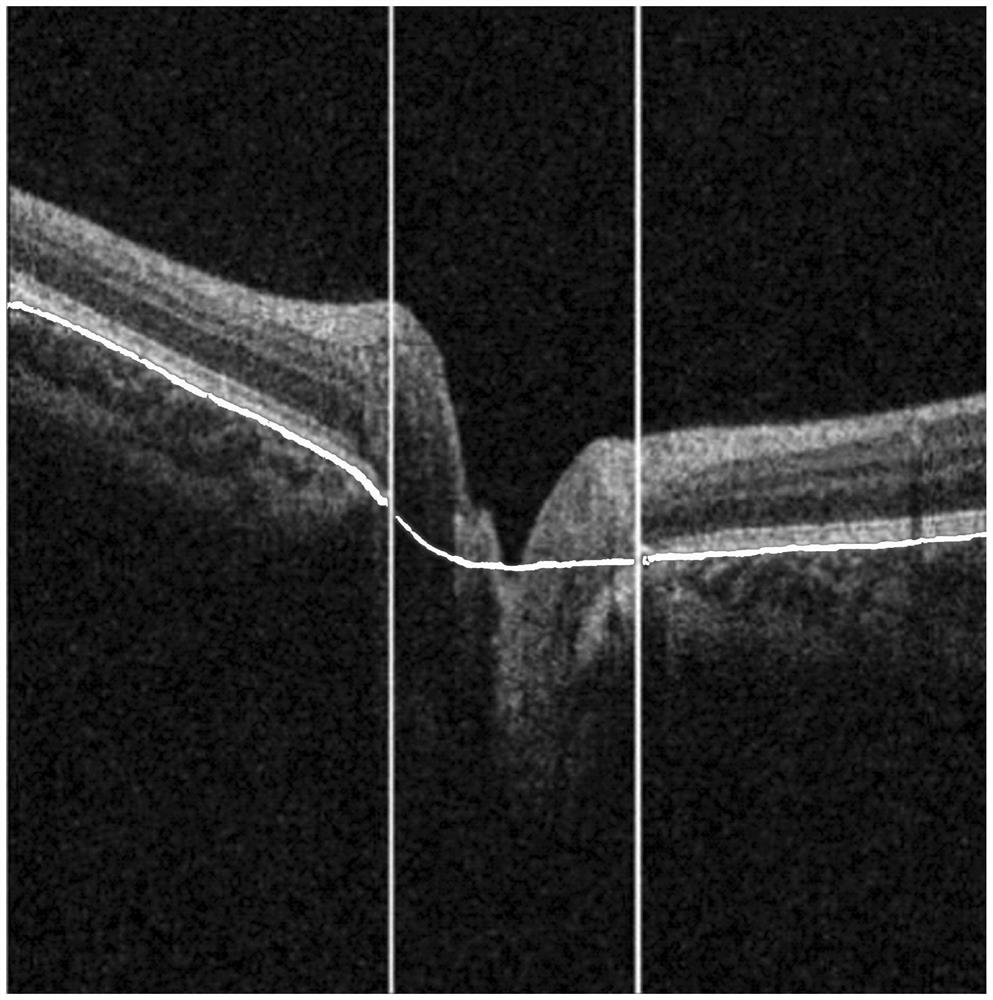BMO position positioning method of oct image
A positioning method and image technology, which is applied in the fields of eye testing equipment, medical science, diagnosis, etc., can solve the problems of time-consuming, missing, positioning influence, etc., and achieve the effect of solving the problem of insufficient accuracy
- Summary
- Abstract
- Description
- Claims
- Application Information
AI Technical Summary
Problems solved by technology
Method used
Image
Examples
Embodiment Construction
[0042] Such as figure 1 Shown is the method flowchart of the method of the present invention: the BMO position positioning method of this OCT image provided by the present invention comprises the following steps:
[0043] S1. Synthesize the OCT volume data into a two-dimensional projection image, and perform optic disc segmentation on the color fundus image at the same time;
[0044] In the specific implementation, the SD-OCT images are added and normalized by column to obtain the two-dimensional projection map of the OCT image, as figure 2 shown; among them, figure 2 (a) is a single SD-OCT image; figure 2 (b) 2D projection image synthesized from 128 SD-OCT images;
[0045] At the same time, the optic disc in the color fundus image can be segmented by using the method of Hough circle detection;
[0046] S2. Register the color fundus map and the two-dimensional projection map obtained in step S1, so as to obtain the optic disc outline on the two-dimensional projection ma...
PUM
 Login to View More
Login to View More Abstract
Description
Claims
Application Information
 Login to View More
Login to View More - R&D
- Intellectual Property
- Life Sciences
- Materials
- Tech Scout
- Unparalleled Data Quality
- Higher Quality Content
- 60% Fewer Hallucinations
Browse by: Latest US Patents, China's latest patents, Technical Efficacy Thesaurus, Application Domain, Technology Topic, Popular Technical Reports.
© 2025 PatSnap. All rights reserved.Legal|Privacy policy|Modern Slavery Act Transparency Statement|Sitemap|About US| Contact US: help@patsnap.com



